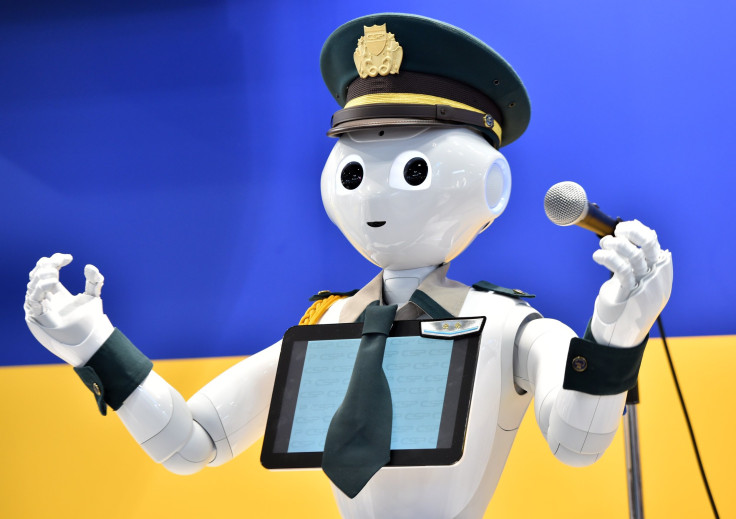Why We Shouldn't Be Afraid Of AI, Robots In The Workplace

There was more discussion than ever in 2017 about robots entering the workforce. Next year will see even more dialogue around this topic, as robotics and AI become more commonplace and at accelerated rates due to machine learning advancements. They are already a part of everyday life in countries like Japan, where humanoid robots are in homes, aiding in healthcare facilities and taking orders at sushi restaurants. But it will take more than just a cute robot to create acceptance.
Culturally, robotics adoption has a long way to go in the U.S. to become part of our daily routines, but we’re getting closer each day. Certainly there is concern around job availability and retention. Professional services firm PricewaterhouseCoopers estimates 38 percent of all jobs will be impacted by automation by 2030.
This isn’t a new cycle of growth within the world’s economies. Since the Industrial Revolution, new technologies have caused shifts in certain job sectors. Job functions like telephone operators that once employed thousands of people have all disappeared. But improvements in telephone technology and the introduction of smartphones have created hundreds of thousands of jobs across software development, app design and manufacturing, with recent reports showing a rebound in U.S. manufacturing jobs. In the future, as in the past, technological change is likely to fuel productivity gains and income growth, boosting demand for labor. This is the perpetual shifting landscape of the economy. So while automation could result in a reduction in certain roles, it will also generate massive job creation on the other side.
Instead of narrowing in on the negative impact or how jobs are at risk, businesses, employees and consumers should embrace the potential of robotics in the workplace as we enter into 2018. There are a few reasons why.
Improved Job Descriptions
The adoption of AI and robotics isn’t about eliminating jobs; it’s about improving job descriptions. The application of artificial intelligence holds opportunity for businesses to create more engaging experiences for customers through increased efficiency and by freeing up time for human workers. In 2018, this will happen by leveraging robots to automate repetitive tasks such as checking inventory levels or giving directions to the restroom. With these type of mundane tasks handed over to automated devices or robots, employees are free to focus on creating better experiences for customers and on higher value-added activities.
Labor Shortages Will Be Addressed
Currently, there is a labor shortage for low-to-mid-skilled workers, yet we continue to insist that we don’t need support from robotics to fill jobs that humans no longer desire. This labor shortage is particularly prevalent this holiday season. Walmart, Amazon, Toys R Us — almost all major retailers — are struggling to find workers for the holiday season, and as a result, companies are increasing wages and bonuses to incentivize workers. For example, UPS increased hiring bonuses by about $200 a week this year. Beyond the big guys, 61 percent of small businesses reported having extreme to moderate difficulty finding and retaining qualified workers. Robots can drive efficiency in the current labor pool by cutting costs for businesses long term.
Better Customer Experience and Brand Engagement
Inserting robots into a business setting creates a new and engaging experience for consumers. This is relevant in industries where online operations have pulled customers away from physical stores or where communicating one-on-one with hospitality staff is important but limited to staff size. In 2018, we’ll see more robots ‘working’ within teams, enabling human cohorts to perform at a higher level, while driving foot traffic, customer engagement and business health for customer-centric sectors like retail, automotive, hospitality and financial services. These robotics systems will create a better way to deliver brand messages and generate revenue, seamlessly fitting into the existing digital experience the businesses are building.
Ultimately a human is going to do a better job closing a sale than a robot, but the robot can facilitate the initial transition. For example, there is an awkward dynamic that exists when a store associate asks you if you need any help. Engaging and friendly robots can dissolve the inherent baggage we carry as two people meeting each other for the first time and get directly to the customer’s needs. From here, the employee can step in after the customer’s needs are identified. This type of interaction helps the bottom line beyond what most businesses have imagined in the past.
Next year will be one of strong robotics adoption, and we’ll begin to see this economic shift take a stronger hold. By utilizing the physical embodiment of powerful technologies like AI, we will continue to see benefits across the value chain in many sectors. This will be a natural business and economic trend that industries will embrace as they have with other digital technologies in the past. If we keep an open mind about robotics rather than shun them out of hand, we’ll all be better off for the effort.
Steve Carlin is the Chief Strategy Officer at SoftBank Robotics.
© Copyright IBTimes 2024. All rights reserved.





















